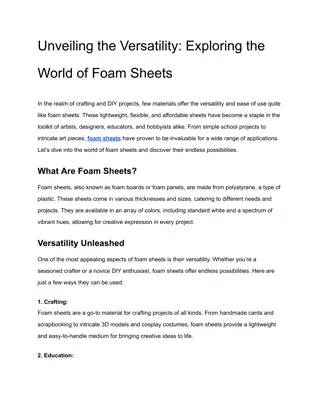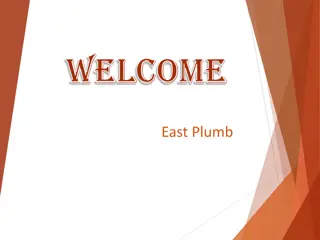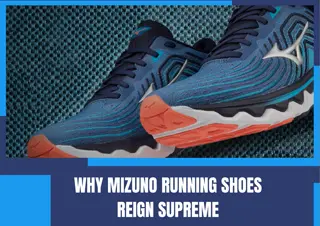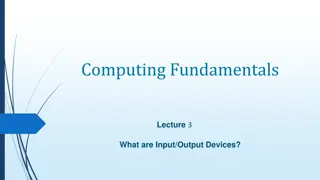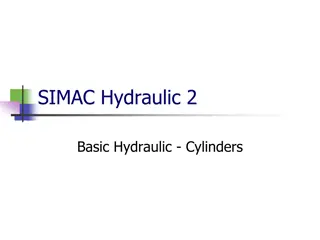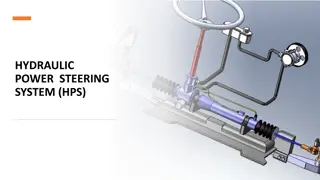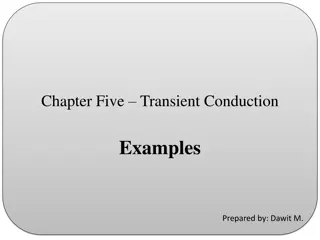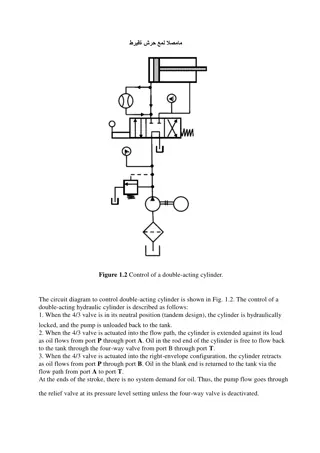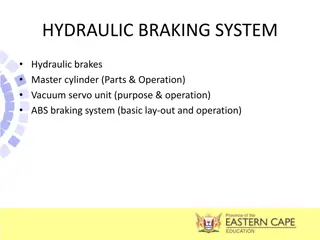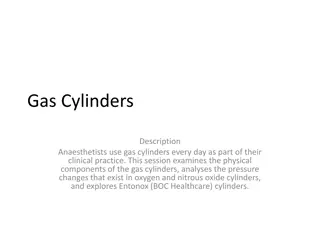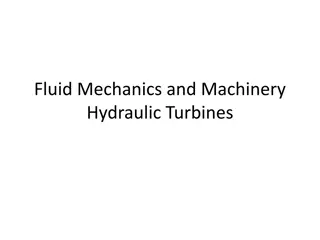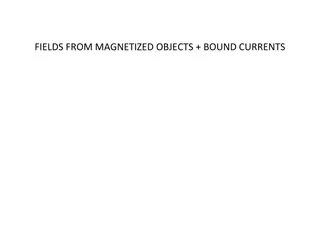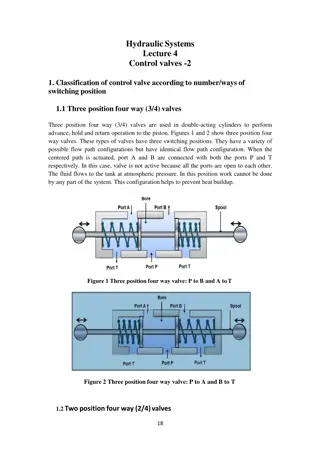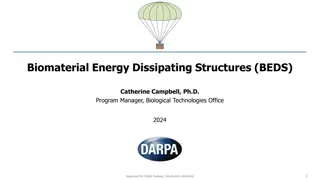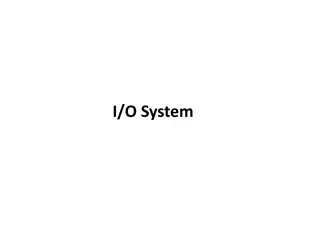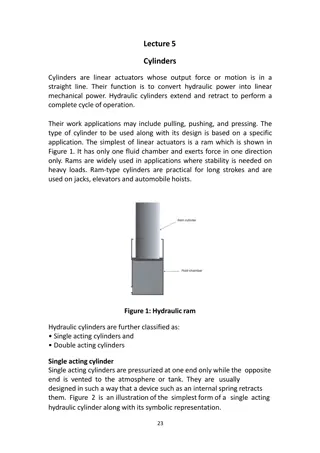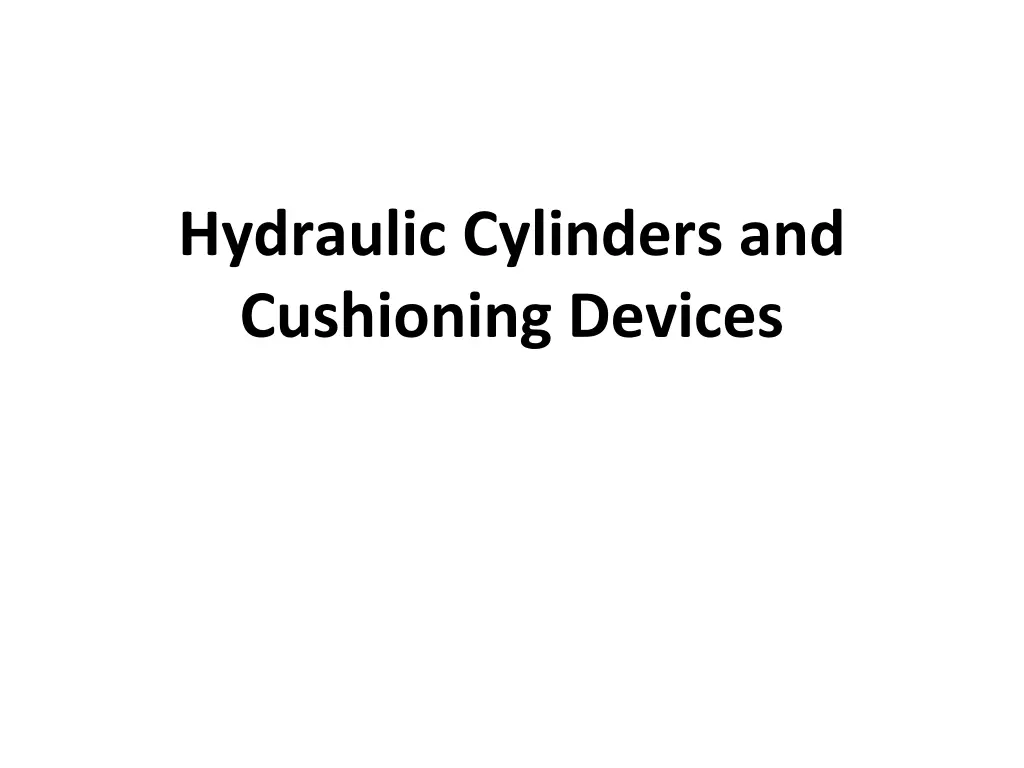
Understanding Hydraulic Cylinders and Devices
Explore the functionality of hydraulic cylinders and devices in converting fluid energy into mechanical energy for various applications. Learn about single and double-acting cylinders, hydraulic motors, and their usage in different industries like aviation and construction.
Download Presentation

Please find below an Image/Link to download the presentation.
The content on the website is provided AS IS for your information and personal use only. It may not be sold, licensed, or shared on other websites without obtaining consent from the author. If you encounter any issues during the download, it is possible that the publisher has removed the file from their server.
You are allowed to download the files provided on this website for personal or commercial use, subject to the condition that they are used lawfully. All files are the property of their respective owners.
The content on the website is provided AS IS for your information and personal use only. It may not be sold, licensed, or shared on other websites without obtaining consent from the author.
E N D
Presentation Transcript
Hydraulic Cylinders and Cushioning Devices
Introduction Hydraulic cylinders and hydraulic motors perform a function opposite to that performed by a pump. They extract energy from a fluid, and convert it to mechanical energy to perform useful work. Hydraulic System F x v v Hydraulic Cylinder P x Q V x I T x Electric Motor Hydraulic Pump T x Hydraulic Motor
Introduction Hydraulic cylinders, also called linear actuators provide a force that drives an external load along a straight line. Hydraulic motors, also called rotary actuators, provide a torque that drives an external load along a circular path. Hydraulic System F x v v Hydraulic Cylinder P x Q V x I T x Electric Motor Hydraulic Pump T x Hydraulic Motor
Hand Operated Hydraulic Jack
Telescopic Boom Forklift
Airplane Wing Flaps and Landing Gear
Single Acting Hydraulic Cylinders Piston Piston Seal Rod Extension Retraction Barrel Port Push Action Oil to extend Return by External Force (e.g. Gravity) Graphic Symbol (P&ID Symbol)
Single Acting Hydraulic Cylinders Push Action Pull Action Oil to extend, Spring for return Oil to retract, Spring to extend
Double Acting Hydraulic Cylinders Piston Piston Seal Rod Extension Retraction Rod Seal Barrel Port B Port A Oil to extend. Oil for Return Graphic Symbol (P&ID Symbol)
Double Ended Piston Rod Double Acting Cylinder Piston Piston Seal Rod Rod Seal Rod Seal Barrel Port B Port A Oil to extend. Oil for Return Graphic Symbol (P&ID Symbol)
Cylinder Construction End Cap Tie Rod Barrel Front Cap Threaded Rod
Cylinder Mounting Methods Front Flange Rear Flange Clevis (Rear Pivot) Foot Bracket Side Lug Intermediate Trunnion
Cylinder Mounting Methods Front Flange Direct Rear Clevis (Rear Pivot) Foot Bracket Screwed Front Intermediate Trunnion
Combining Cylinders with Mechanical Linkages: Oscillatory motion with thrust amplification or reduction First Class Lever Second Class Lever Third Class Lever The three combinations are inverted slider crank mechanisms
Combining Cylinders with Mechanical Linkages: Straight line motion with thrust amplification or reduction 2:1 Motion Multiplier (Rack and Pinion) Two direction straight line Thrust Reducer (Six Bar Mechanism)
Combining Cylinders with Mechanical Linkages: Continuous Rotary Motion Continuous Rotation (Double Ratchet) Fast Rotary Motion (Screw and Nut)
Combining Cylinders with Mechanical Linkages: Motion Transfer Transfer to Distant Point (Pantograph)
Cylinder Alignment: Spherical Bushings and Spherical Bearings Much effort has been made by manufacturers of hydraulic cylinders to relieve or eliminate the side loading of cylinders created as a result of misalignment. It is almost impossible to get perfect alignment and since the alignment of the cylinder has a direct bearing on its life, the efforts have been well worth while. A spherical bushing or a spherical bearing is commonly used to deal with misalignment. This approach may not be able to take the loads that the cylinder is capable of producing. It can act as a complete hinge in one direction only, while being limited to a maximum misalignment of five degrees in the other directions. Spherical Roller Bearing Spherical Bushing
Cylinder Alignment: Universal Joints A universal joint alignment accessory may be used. It allows fifteen degrees of angular misalignment on each side of center. It also provides more load carrying capabilities. It is recommended that not more than a thirty degree maximum misalignment angle be used on the pins
Cylinder Force, Velocity and Power Piston Rod Extension Stroke = F p A ext b = v Q A ext in b = = P F v p Q ext ext in Port Port Retraction Stroke ( ( F ) ) = F p A A ret b r = v Q A A ret in b r = = P v p Q A ret ret in b r A
Cylinder Loading Through 1st class lever As the lever rotates an angle from its initial orientation, the cylinder rotates an angle cyl and the load rotates with an angle load Neglecting friction and dynamic loading (small values compared to forces from the cylinder thrust and load), then taking the moments around the pivot, O, we have = 0 M O cos ( cos ) ( ) = cos 0 F L F + L + 1 2 cyl cyl cos load sin load ( ) cos cos sin F = L L1 L2 1 cyl F cyl cyl sin ( ) sin L 2 load load load For small values of and cyl , and load sin sin cyl 0, and sin sin cyl 0 O Fcyl Fload load cos = cos cos cos cos F L F L 1 2 cyl cyl load load L = 2 load F F cyl load cos L cyl 1 cyl Assuming no change on the load orientation, load =0 L F cos 1 = 2 F cyl load L cyl
Load Displacement Through 1st class lever Assume no change on the orientation of the load, and using the conservation of energy (Fcyl cyl = Fload load), we have from the previous equation for small values of and L1 L2 F L cyl = = 2 load cos F L 1 cyl load O Fcyl Fload
Cylinder Loading Through 2nd class lever L2 L1 Using the previous assumptions, with no change on the load orientation, we have we have O Fcyl Fload = 0 L M O ( ( ) )( ( ) + = cos cos 0 F F L F L 1 2 2 cyl load ) + + = cos cos sin sin cos F L L L 1 2 2 cyl load For small values of and , sin sin 0, and ( ) + = cos cos cos F L L F L 1 2 2 cyl load F L cyl = = 2 load ( ) + cos F L L 1 2 load cyl
Cylinder Loading Through 3rd class lever L1 L2 In this case, we have O = 0 M Fcyl O ( ) ( ) = Fload + = cos cos F 0 F L F L L 2 1 2 cyl load ( ) ( ) + + cos cos sin sin cos F L L L 2 1 2 cyl load For small values of and , sin sin 0, and ( ) = + cos = cos cos F L F L L 2 1 2 cyl load ( L ) F + L L cyl = 1 2 load cos F 2 load cyl
Buckling and Telescopic Cylinders Buckling occurs when the rod of the cylinder bend or bows sideways under the action of compressive load. The longer and lighter the cylinder rod, the more likely it is for it to buckle. When selecting a cylinder from catalog, it is important to calculate the buckling loads. Telescopic cylinders allow a longer cylinder stroke without buckling. These cylinders have from 2 to five telescopic sections with each section sliding inside a larger section. They are used for lifting platforms, tipping platforms and other commercial vehicle applications.
Hydraulic Cylinders Cushions Double acting cylinders sometimes contain cylinder cushions at the end of the cylinder to slow down the piston near the ends of the stroke. This prevents excessive impact when the piston is sopped by the end caps. Deceleration starts when the tapered plunger enters the opening in the cap. This restricts the exhaust flow from the barrel to the ports. During the last portion of the stroke, the oil must exhaust through an adjustable opening
Hydraulic Cylinders Cushions The cushion also incorporates a check valve to allow free flow to the barrel during the piston s reversed stroke. The maximum pressure developed by cushions at the end of the cylinder must be considered, since excessive pressure buildup would rupture the cylinder. Refer to example 6-6 in the textbook, which illustrates how to calculate this pressure.
Hydraulic Shock Absorbers A shock absorber is a multiple orifice hydraulic device. When a moving load strikes the bumper of the shock absorber, it sets the rod piston in motion, which pushes the oil through the a series of holes from the inner, high pressure chamber, to the outer, low pressure chamber. The resistance of the oil flow caused by the holes creates a pressure that acts against the piston to oppose the moving load.


